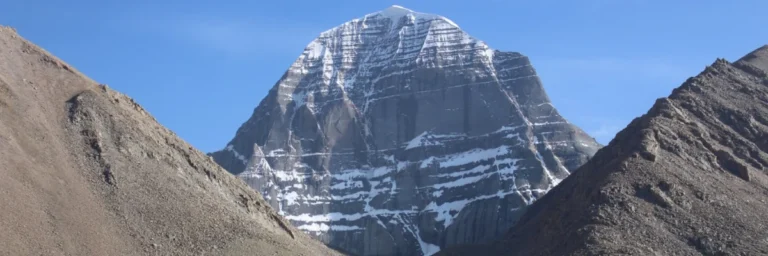
Table of Contents

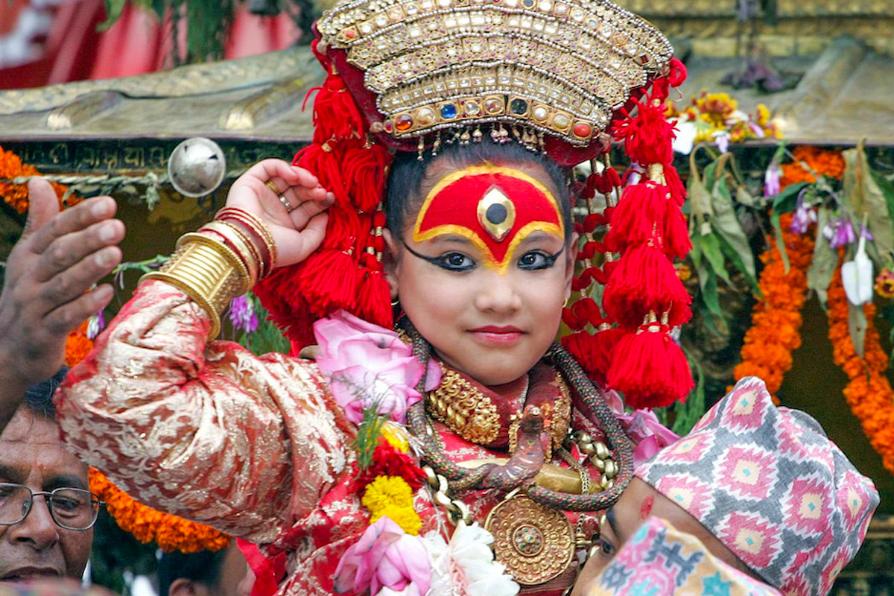
Introduction to Kumari
In the heart of Kathmandu, in the middle of the busy Kathmandu Durbar Square, resides an ancient tradition shrouded in mystique and devotion — the Kumari, Nepal’s Living Goddess. This divine practice is deeply rooted in the Newari culture, chooses a young girl who is believed to be the earthly manifestation of Taleju Bhawani or Durga. She embodies great spiritual significance.
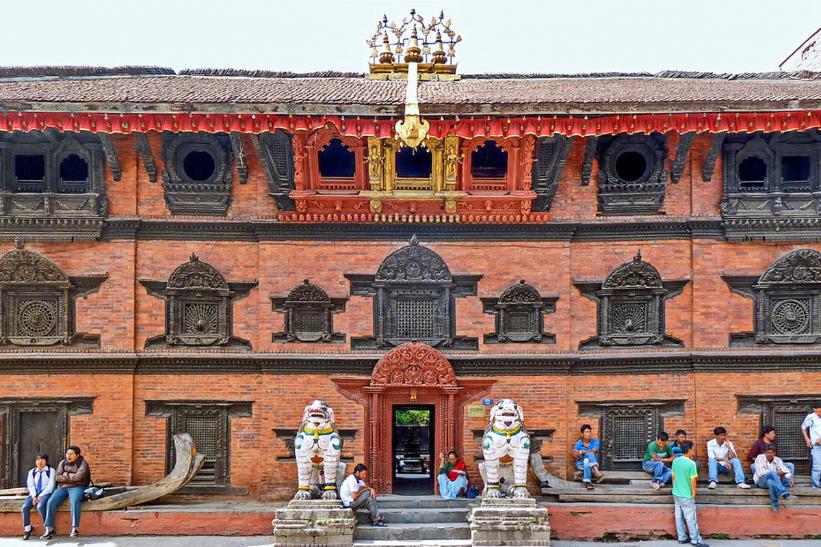
History and Cultural Significance of Kumari
The tradition of Kumari dates back centuries. It originates from the reverence of Taleju Bhawani by Nepal’s kings. Legend has it that the goddess would visit the palace to engage in divine discourse with the rulers. The ritual was formalized in the 17th century, making sure of the continuity of worship through a chosen Kumari. Today, this ritual stands as a testament to Nepal’s rich cultural belief and its deep-rooted spiritual heritage.
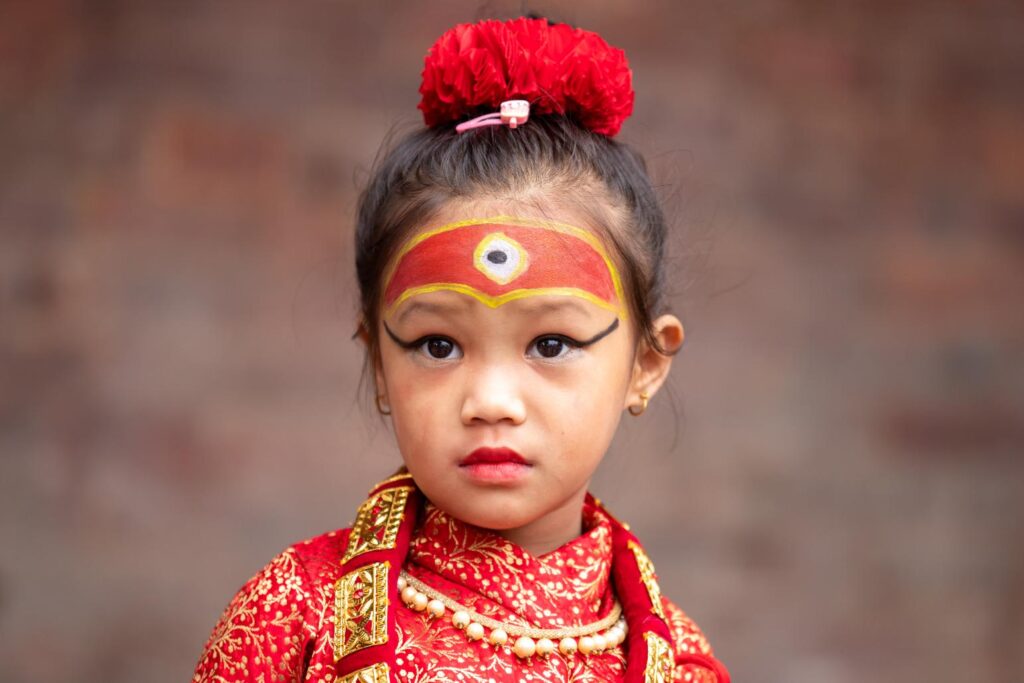
How is a Kumari Goddess Chosen?
The selection of a Kumari involves meticulous criteria overseen by a council of senior Buddhist priests. The chosen girl must embody the “32 perfections,” including physical attributes like unblemished skin and a specific body shape. The final selection, conducted during the auspicious Kalratri of Dashain, involves rigorous rituals and tests to make sure of the purity and spiritual readiness of the chosen Kumari.
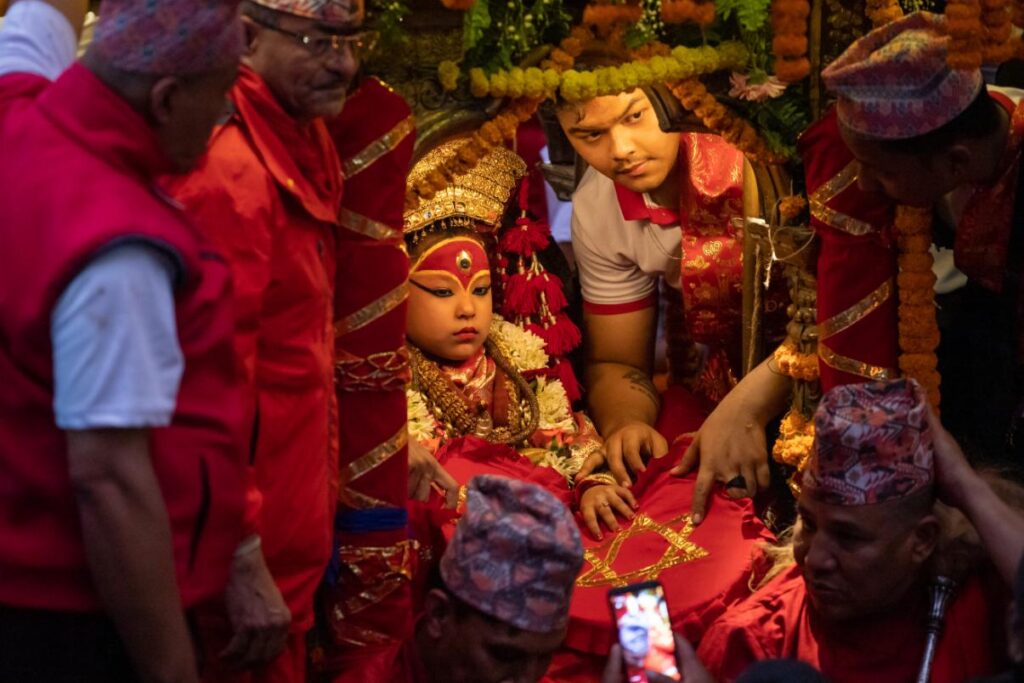
Shakti (Power) of Kumari
Kumari is revered as the living embodiment of divine feminine energy. It symbolizes the potent power of Taleju Bhawani or Durga. Her presence is believed to bring blessings and fulfill the devotees’ wishes, underscoring her role as a conduit between the mortal realm and the divine.
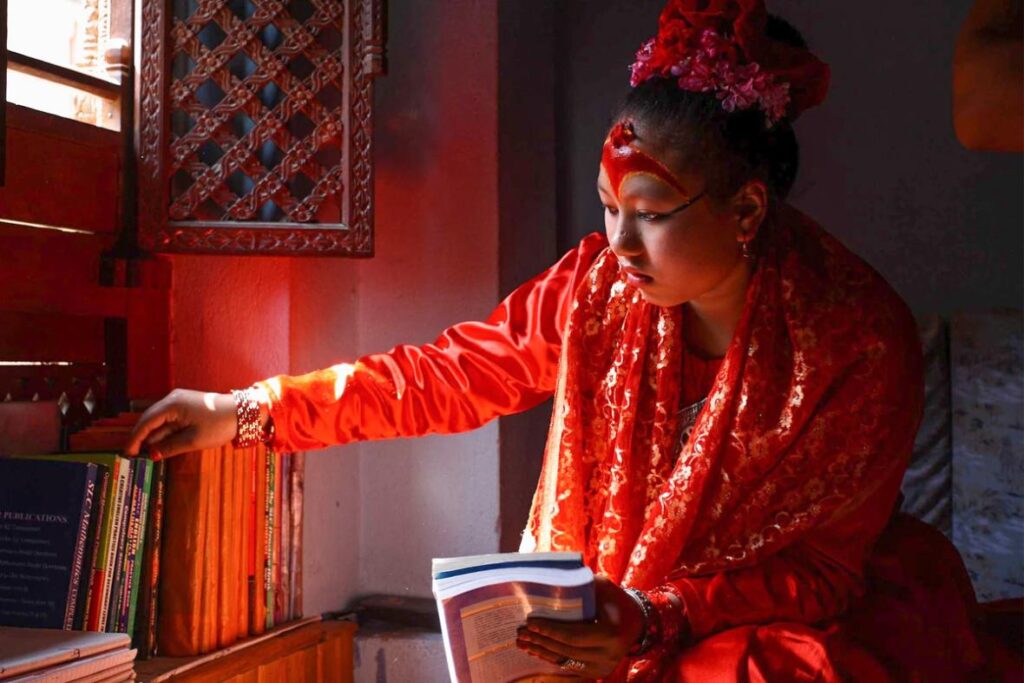
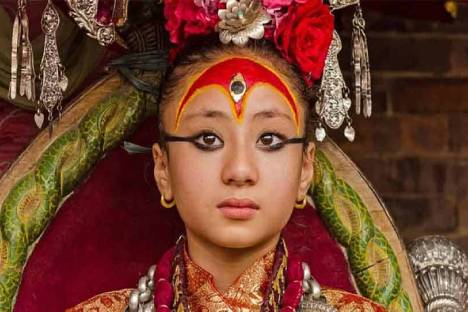
Life and Duties of Kumari
Once chosen, the Kumari reside in the Kumari Ghar. It is a sacred abode within Kathmandu’s Durbar Square. Her life is isolated. It is marked by strict rituals and prohibitions, including the restriction from touching the ground outside ceremonial occasions. Despite her young age, Kumari takes part in significant religious ceremonies and festivals.
Kumari Rituals and Festivals
The Kumari’s influence peaks during festivals like Dashain and Indra Jatra, where she is paraded through Kathmandu in a golden palanquin. These occasions highlight her very important role in Nepalese culture. It attracts devotees and tourists to witness her divine presence.
Frequently Asked Questions about The Living Goddess – Kumari
Who is the current Royal Kumari of Nepal?
The current Royal Kumari is Trishna Shakya, chosen in 2017 and residing in the Kumari Ghar, Basantapur Durbar Square since then.
Can you marry a Kumari?
Before the answer was a strict no. Kumari remained celibate throughout her tenure as the living goddess, symbolizing purity and devotion to her divine role. It is commonly believed that Kumaris’ spouses pass away at a young age if she gets married.
However, in today’s times, the myth has been broken, and the ex-kumaris can marry as long as they wish to get married.
What happens to Kumari after she hits puberty?
Upon reaching puberty Kumari is dethroned, and a new Kumari is selected following the rigorous criteria all over again.
What is the Kumari tradition in Nepal?
The Kumari tradition is a unique practice in Nepal where a young girl is chosen to represent the Living Goddess, believed to be the earthly form of the goddess Taleju Bhawani or Durga.
How old is the Kumari when she is chosen?
A Kumari is usually chosen between the ages of 3 and 5 years old. The girl must meet specific criteria to be selected.
How long does a girl remain as the Kumari?
A girl remains the Kumari until she reaches puberty, after which a new Kumari is selected to take her place.
Can anyone see the Kumari?
Yes, people can visit the Kumari at her residence, the Kumari Ghar in Kathmandu Durbar Square. However, she mostly appears in public during special festivals and rituals.
What does the Kumari do during festivals?
During festivals like Indra Jatra and Dashain, the Kumari is carried in a golden palanquin around the city, blessing the people who come to see her.
Does the Kumari attend school?
No, the Kumari does not attend a regular school. She is privately educated inside her residence by tutors who teach her subjects while she fulfills her divine role.
What happens after the Kumari is retired?
After her retirement, the former Kumari returns to a regular life. She often has to adjust to a new way of living, as her role as the goddess ends.
Do former Kumaris face difficulties in their lives after retiring?
Adjusting to a normal life can be challenging for former Kumaris since their time as the goddess was highly ritualized. However, many go on to live fulfilling lives.
Why is the Kumari forbidden from walking on the ground?
The Kumari is considered a pure goddess, and walking on the ground is seen as a connection to the mortal world. She is only carried or allowed to walk during specific rituals.
Can the Kumari speak?
Yes, the Kumari can speak, but during public appearances, she mostly remains silent to maintain her divine image.
Are there other Kumaris besides the Royal Kumari?
Yes, there are other Kumaris in different parts of Nepal, such as Patan and Bhaktapur, but the Royal Kumari in Kathmandu is the most well-known.
Do people still believe in the Kumari’s divine power today?
Yes, many Nepalese people, especially those in the Newar community, continue to believe in the Kumari’s power to bless and protect them.
Is the Kumari allowed to meet her family?
Yes, the Kumari can meet her family, but her life is quite isolated, and she spends most of her time in the Kumari Ghar with caretakers.
What qualities are required to become a Kumari?
The girl chosen to be the Kumari must be free from any physical flaws, have an even set of teeth, unblemished skin, and match a list of “32 perfections.”
Does the Kumari ever leave her residence?
The Kumari only leaves her residence during important festivals and rituals. Otherwise, she stays inside the Kumari Ghar for most of her time.
What role do Buddhist priests play in the Kumari tradition?
Buddhist priests are involved in the selection process of the Kumari, even though the tradition is based on Hindu beliefs. This reflects Nepal’s blend of religious practices.
What are some challenges of being the Kumari?
Life as a Kumari can be lonely and restrictive. The young girl has to follow strict rules and is kept away from many normal activities like playing outside.
Why is the Kumari tradition important for Nepal?
The Kumari tradition represents Nepal’s deep cultural and spiritual heritage. It’s an important part of the country’s religious festivals and national identity.
Can tourists visit the Kumari Ghar?
Yes, tourists can visit the Kumari Ghar in Kathmandu’s Durbar Square. Sometimes, they might even catch a glimpse of the Kumari during public ceremonies.
How does the Kumari bless people?
The Kumari blesses people by simply looking at them or allowing them to touch her feet during special occasions. Many believe her blessings bring good fortune and protection.
What are the 32 perfections of Goddess Kumari?
The “32 perfections” are specific physical and symbolic qualities that a girl must possess to be chosen as the Kumari, the Living Goddess of Nepal. These qualities reflect purity, divinity, and the ideal characteristics of a goddess.
Here are the traditional 32 perfections of the Kumari:
- A neck like a conch shell
- A body like a banyan tree
- Eyelashes like a cow
- Thighs like a deer
- A chest like a lion
- Voice soft and clear like a duck’s
- Unblemished skin
- A single set of teeth
- Black, glossy hair
- Soft, moist hands and feet
- Small, well-proportioned tongue
- Evenly set teeth
- Large, black eyes
- A smooth, unwrinkled brow
- A slender waist
- Forty unbroken teeth
- A small, well-recessed sexual organ
- Hands and feet delicately soft and moist
- A small and perfectly shaped tongue
- An even and symmetrical body shape
- Straight, undisturbed hairline
- No marks, scars, or blemishes on the body
- Calm and fearless in temperament
- Never shows fear, even in the presence of blood
- A cool, composed demeanor
- Patience, even under pressure
- Bravery in challenging situations
- A balanced and focused personality
- A generous, compassionate heart
- No history of serious illness
- Free from body odor
- Able to stand still and poised during the selection process
These qualities are a mix of physical traits and symbolic attributes that signify the Kumari’s divine nature, making her a suitable embodiment of the goddess Taleju Bhawani.
What does the Kumari wear during public appearances?
The Kumari wears a traditional red dress adorned with gold jewelry and a crown. Her makeup includes a third eye painted on her forehead, symbolizing her divine power and insight.
Why is the Kumari tradition a mix of Hinduism and Buddhism?
Though the Kumari represents a Hindu goddess (Taleju Bhawani), the selection process and rituals are influenced by Buddhist practices, particularly the involvement of Buddhist priests. This reflects the unique blend of Hindu and Buddhist cultures in Nepal.
How is the Kumari’s health taken care of?
The Kumari is closely cared for by her family and a group of caretakers in the Kumari Ghar. They ensure she receives proper nutrition, medical care, and education, while adhering to the rituals surrounding her divine role.
What does it mean when the Kumari cries or laughs during a blessing?
It’s believed that the Kumari’s emotional reactions during blessings can carry different meanings. For example, if she cries or laughs loudly, it may be seen as a sign of impending misfortune. If she remains calm and composed, it is viewed as a positive blessing.
Has the Kumari tradition faced any criticism?
Yes, the Kumari tradition has faced criticism, particularly regarding the isolation of young girls and the restrictions placed on their lives. Some argue that it limits their personal freedom and development. However, efforts have been made to balance the tradition with modern concerns for the well-being of the Kumari.
Conclusion
The Kumari tradition stands as a greatest testament to Nepal’s cultural and spiritual depth. As the living embodiment of divine grace and power, Kumari continues to captivate hearts and minds worldwide.
You may also like:
Send an Enquiry
Error: Contact form not found.
© 2025 - Himalayan Trekking and Tours (P) Ltd. All Rights Reserved.


